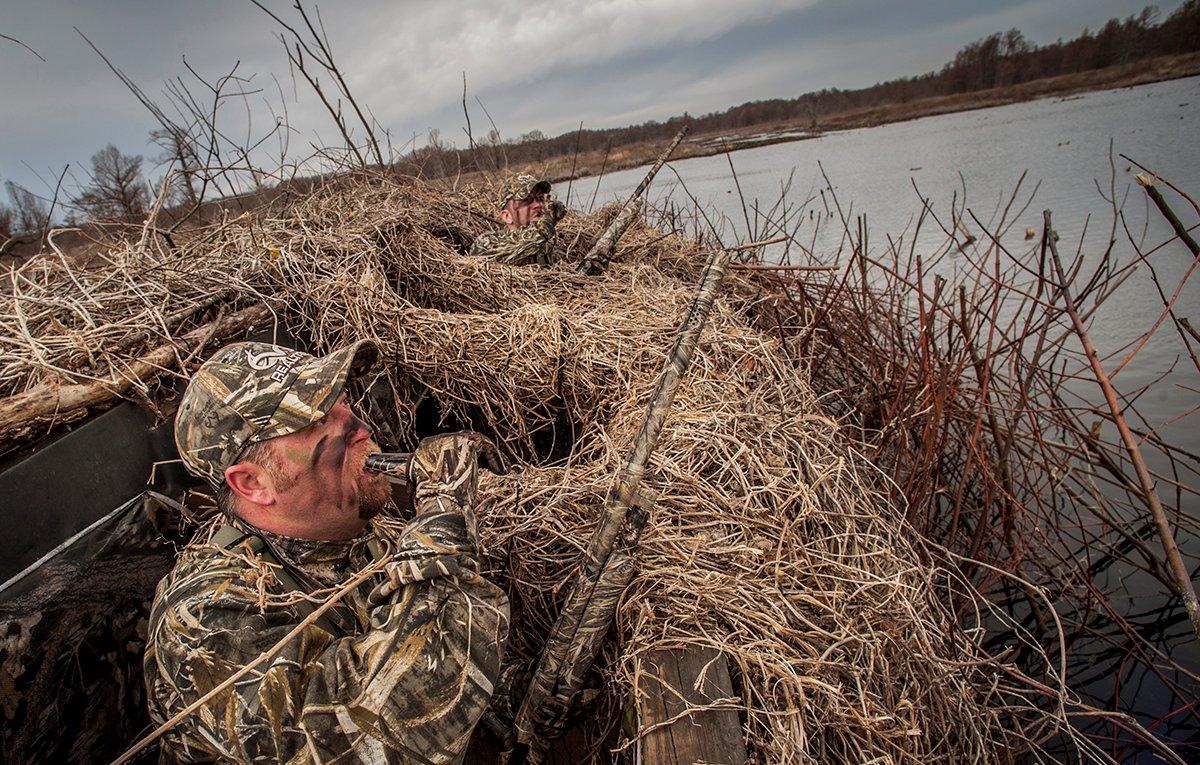The pros reveal their go-to calls for hunting success
I own way too many duck and goose calls. There's nothing wrong with that, of course, but only a few of those qualify as indispensable tools on my lanyards for various waterfowling situations.
That got me thinking. My favorite combinations were forged through personal experience, but I wondered what the pros carry to the marsh and field. What calls are always on their lanyards?
So I asked. Their responses provide a great template of must-have duck and goose calls.
Tony Vandemore
Whether guiding in Saskatchewan or the heartland, Vandemore, owner of Habitat Flats in Sumner, Missouri, is never without two calls.
I always have a loud, high-pitched short-reed goose call and a loud single-reed duck call, he said. I want them to be able to hear me out in the open with the wind, especially when running traffic.
James Buice
An avid waterfowl hunter and frequent Realtree.com Duck Blog contributor, Buice takes a utilitarian approach to his hunting calls. For starters, he runs an Echo acrylic Pure Meat for whiney, snotty hen talk and low-end work, and an original green Rich-N-Tone Bois d'Arc short-barrel cut by RNT founder Butch Richenback.
It's one of the best all-around calls I own, he said. It can do it all.
Further, he always has a Gaston Custom Calls specklebelly call and a homemade pintail whistle on his lanyard.
Specks have been saving the day, and the Gaston can get loud when you need it, and you can bring it down for moans and clucks, he said. The pintail whistle … is a good call to have if pins are around. Plus, I can use it as a mallard drake call when spooky birds are in close and I need them to finish.
When hunting timber, Buice swaps out the specklebelly call for a custom-made RNT Mondo that's cut down to get really loud and obnoxious.
John Pollmann
An avid South Dakota hunter and noted waterfowl writer, Pollmann always keeps three duck calls around his neck: a double-reed, a single-reed and a whistle.
The double-reed I'm using now is a soft-blowing call that is just plain ducky on five-note greeting calls and feeding chatter, he said. It doesn't take a lot of air to move the reeds, but I can put some breath behind it, too, for a snappy comeback. This call is my go-to primarily because I feel really confident that it's going to make the exact sound I want when I blow it. You cannot overstate the importance of confidence when it comes to blowing a call.
He uses an acrylic single-reed when he wants to cut through the wind or if he's hunting big water.
A lot of hunters are switching to a cut-down or Mondo-style call for these same reasons, he said. Sometimes, you just need to be heard, and this call does just that. My single-reed is flexible enough, too, that I can use it to make those raspy four- or five-note quacks of a blue-winged teal or the short, single 'kak' of a gadwall.
Pollmann said every hunter should also carry a whistle because it can mimic the vocalizations of many ducks, including wigeon, pintails, wood ducks, green-winged teal and even drake mallards.
I've watched pintails ignore my best five-note greeting calls only to turn on a dime when I switched to the whistle, he said.
And what about geese?
I keep a short-reed goose call on the lanyard, too, even if I'm not hunting over any honker decoys, Pollmann said. Canada geese will work to the clucks and honks of the short-reed, it seems, even if they do not see any of their buddies on the water. They might not finish, but the short-reed is often enough to get them into range.
Beretta A400 Lite Semiautomatic Shotgun in Realtree MAX-5
Jeremy Dersham
Dersham guides hunters in southern Wisconsin and on the famed Pool 9 of the Mississippi River, chasing everything from local geese and wood ducks to big-water canvasbacks. Still, he relies on a few battle-proven calls.
I have everything from high-end acrylics to many less-expensive polycarbonates in my duck bag, but I have three go-to calls on my lanyard at all times: two single-reed acrylics and a short-reed Canada goose call, he said. I'm running a Hayes Calls Bad Azz and Lil Bad Azz on my lanyard along with the Hayes Hammer Time goose call. From big water to corn fields to flooded timber, they are my go-to calls. A basic greeting, feeding chuckle and lonesome hen call have brought in everything from mallards to canvasbacks to teal. I personally prefer a single-reed because (it provides) less freeze-up, but it's truly comfort and choice.
And although Dersham said you don't have to be a champion duck caller to kill ducks and geese, proficiency never hurts.
I've hunted with guys who picked up a call the very first time on a hunt with me and others who are three-time state champs, he said. The biggest thing to remember is that each day is different. There are so many variables to think about — early-season young birds to late-season adults, every situation is different. My best advice is to mimic what the birds are doing. I've been on early-season hunts when birds won't speak to late-season hunts where they won't shut up. Getting out and listening, watching and seeing what birds do depending on the weather, time of year and location will make you a better caller. Spring, during the northerly migration, is a great time to go out to watch and listen to birds. You'll become a better duck hunter.
Dersham also dismissed the idea that competition callers don't fare as well as meat callers afield.
The old adage of competition callers not being hunters is garbage, he said. Most competition callers are some of the best hunters I know. Most can mimic any sound they hear.
John Gordon
Gordon, who handles media and public relations for Banded Holdings and Avery Outdoors, is never without his RNT Daisy Cutter, a Riceland Custom Calls speck call and an old modified Olt 800.
The RNT Daisy Cutter is my go-to duck call day in and out, he said. It combines a super-ducky low end with a top end that is not overly loud. I can sound like several ducks at once, and it works great in timber to open water.
He carries the specklebelly call because whitefronts might show up anywhere he hunts, including northeastern Arkansas, western Tennessee and the Mississippi Delta.
I like the Riceland because it is loud and clear, Gordon said. Once you master it, you can really hammer on it to mesmerize geese. It clucks and growls with ease and doesn't take a lot of air pressure to run.
And the Olt provides needed adaptability, thanks to some modifications that hail back to Gordon's guiding days.
This one stays on my lanyard for nostalgia more than anything else, but it is an incredibly versatile goose call, he said. When I began guiding for snows and specks on the Texas coast in the early '90s, every guide I knew used one — with a modification, however. We took the reed and pushed it all the way down on the tone board so you could reach the high pitch of a snow or Ross's. But with practice, you can also still call Canada geese in with it, especially the Richardson's geese. And it does an amazing two-note speck call that not a lot of people have used outside of that area. I bet most young guys out there have never heard specks called to like that before. An old speck doesn't yodel in that high pitch sometimes. They have a lower, gravely two-note call that can only be replicated by the 800. Every day, we would try both calls to see which one the birds would respond to better. It was amazing how they would prefer one calling style over the other.
Calling All Ducks
Maybe your go-to lanyard follows an approach similar to that of the pros. Perhaps it's different. It's an individual thing, and that's the point: No matter what we choose, we must be able to reach for a call we trust when the situation arises.
Click here for more Realtree waterfowl hunting content. And check us out on Facebook.








